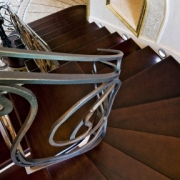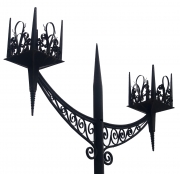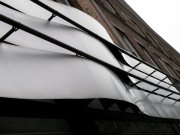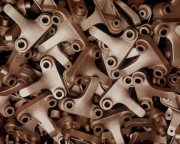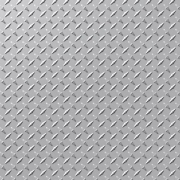- Error
{Re}habitat
Learn how adaptive reuse and upcycling can add hip design to your home, apartment, or yard with the Go Green channel's {Re}habitat series. Follow host Rachael Ranney as she shows you how to repurpose salvaged and found materials, adding fun and function to your space without breaking your budget.

This topic covers information related to wood, plastic, and composite fasteners that are used in construction. Fasteners can be a hardware device that mechanically joins materials or a liquid mixture that bonds materials together. Fasteners include nails, screws, bolts, metal connectors and adhesives.
This topic includes information related to decorative metal railings installed during construction. Decorative metal railings are custom, functional handrails and railings. As compared to traditional handrails and railings, decorative metal railings have added aesthetic appeal.
This topic includes information related to decorative metal stairs installed during construction. Decorative metal stairs are custom functional stairways commonly made from aluminum or steel. As compared to traditional metal stairs, decorative metal stairs have added aesthetic appeal.
Decorative metal can be defined as metal that provides architectural decoration but has no structural value. Metal can be formed into countless shapes while still retaining many advantageous properties. A wide variety of metals and alloys can be used, including aluminum, brass, steel, tin, silver, gold, and wrought iron. Examples of decorative metal uses are countless but include spiral staircases, guardrails, handrails, gates, decorative brackets, and cornices. For certain projects, designers may specify metals that will react to the elements, resulting in a modified surface appearance called a patina. Other projects may call for painting or factory finishing to protect the metal or add aesthetic detail.
Formed metal fabrications include column covers, metal panels, and other metal fabrications that are used in the building industry. Through a variety of different processes, most metals can be formed into virtually any shape. Metal forming processes include roll forming, stamping and brake forming. All processes begin with sheet metal of varying gauges – a higher gauge corresponds to a thinner sheet. Aluminum, stainless steel and galvanized steel are all common materials used to fabricate formed metal components.
Metal casting is the process in which metal is melted and poured into molds, where it is allowed to solidify. Metal casting is one of the world’s largest industries, with over 2000 metal casters producing 13 to 15 million tons of castings annually. Metal casting is often used for making complex shapes which would otherwise be difficult or more expensive to produce.
This topic includes information related to metal stair treads and nosings installed during construction. Metal stair treads and nosings are fabricated portions of a stairway used for foot traffic from floor to floor within a structure. Stair treads may be solid plate, bar or plank grating and are commonly made from aluminum or steel.
This topic includes information related to metal floor plates installed during construction. Metal floor plates are solid floor plates with rough surfaces, treads or small perforated holes. Metal floor plates are used to cover a void located in a floor or road paving where an open space presents a fall hazard.

